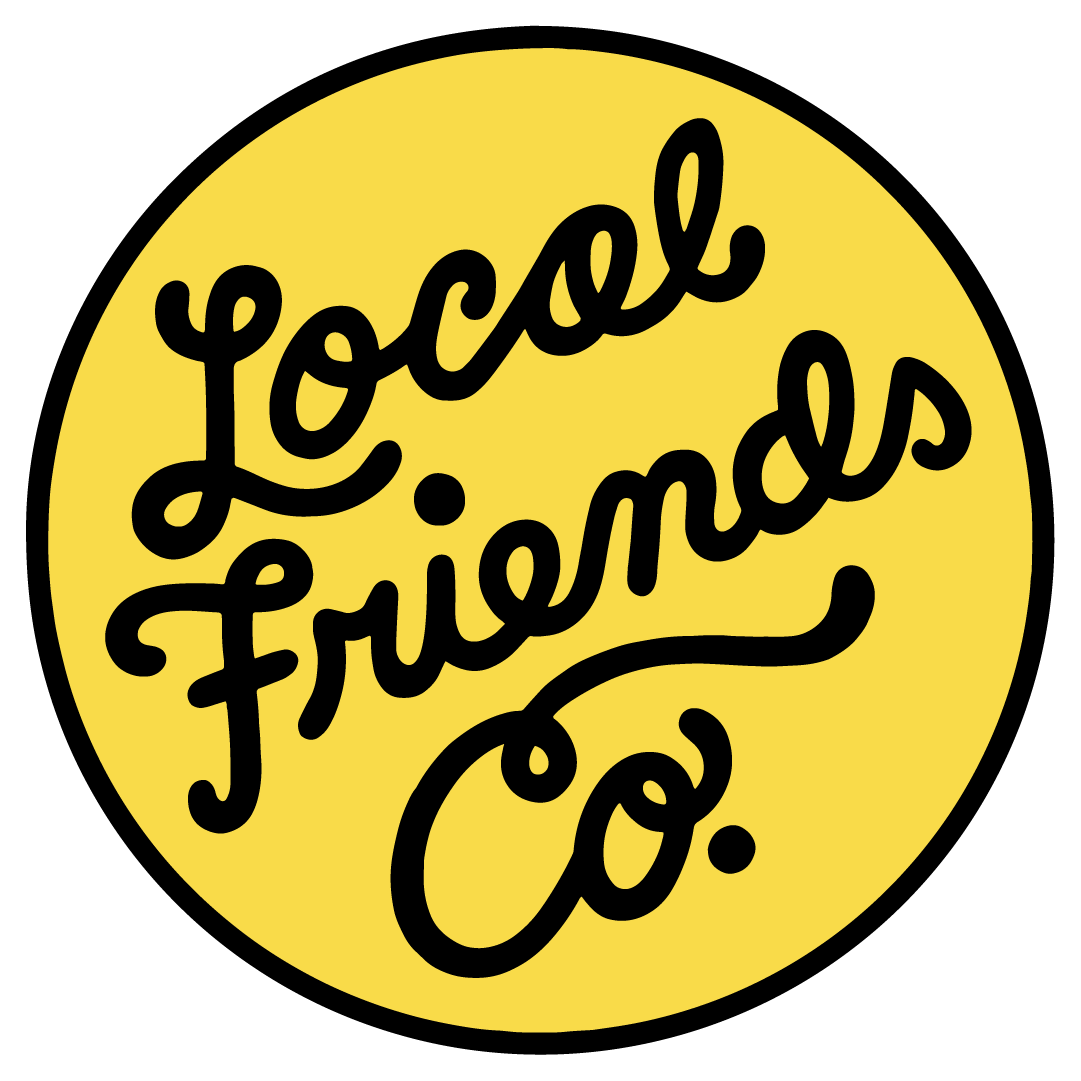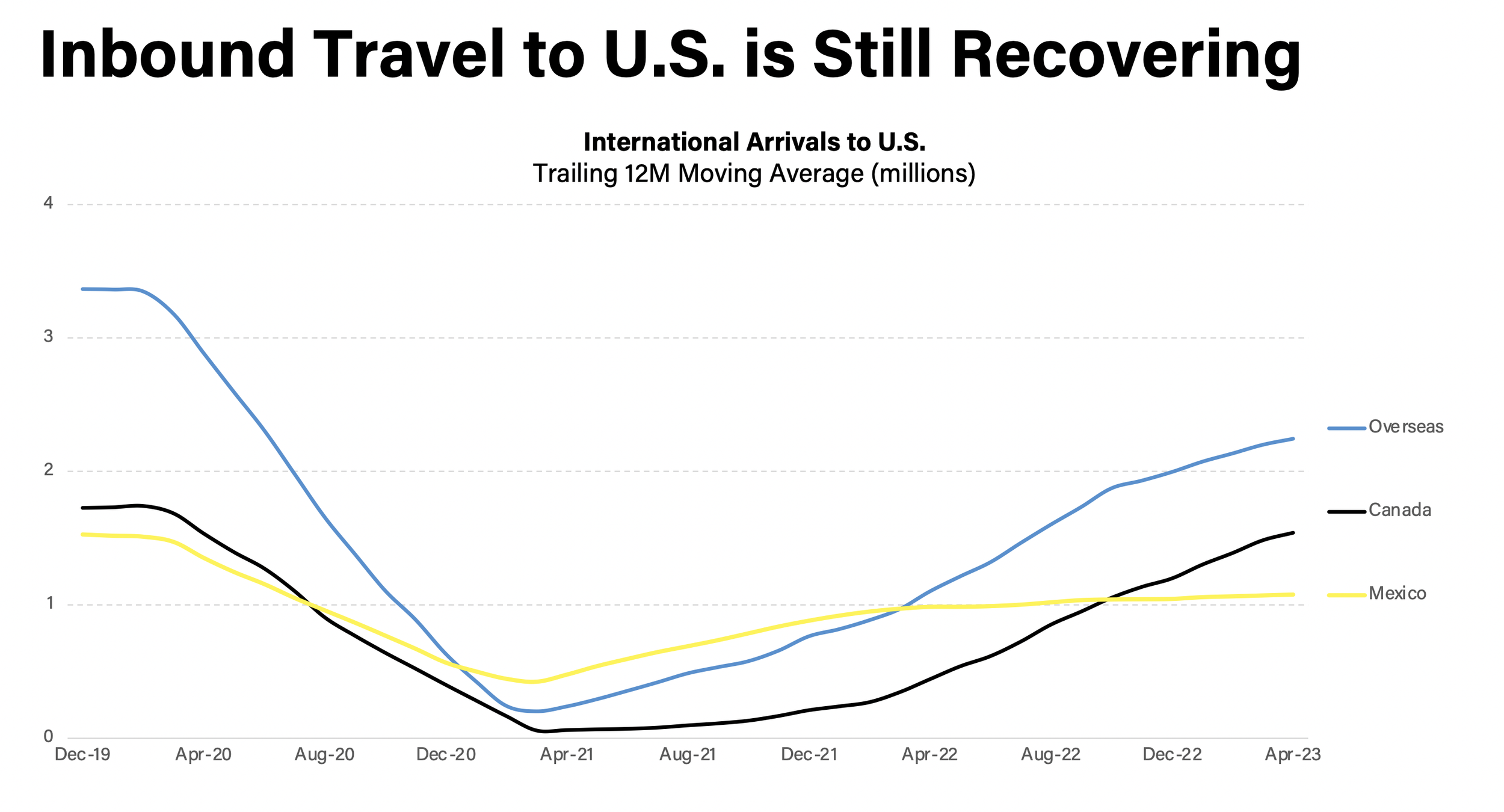
Dec ‘23 Industry Insights & Trends
Industry Insights
State of Travel 2023 - Skift
Joe D’Alessandro still loves San Francisco.
“It’s still spectacularly beautiful,” he said. “And, you know, as I drive across the Golden Gate Bridge or go through the city and see these hills and the vistas with the water and the parks and the architecture and the neighborhoods … it’s unlike anywhere else in the world. We have that base, and a lot of places don’t.”
After 17 years as the city’s tourism chief and a true believer of the city, D’Alessandro, 67, retired at the end of last year. He saw 11 record-breaking years of visitors, followed by its worst crisis in recent memory, when the pandemic brought tourism to a standstill.
Hospitality is the engine of San Francisco’s economy, accounting for the most jobs of any industry before the pandemic — 2020 slashed visitor spending by an estimated $8 billion. Tourism encompasses airlines, hotels, restaurants, museums and more, critically shaping the city’s reputation around the world through millions of visitors visiting landmarks and walking through its streets.
As CEO of the San Francisco Travel Association, the city’s official destination marketing organization, D’Alessandro saw it all: Crises including the 2008 financial crash, followed by a tech boom that crammed the city with business travel and conventions. His last big event was November’s Asia-Pacific Economic Cooperation summit, which brought almost two dozen world leaders to the city amid unprecedented security and global attention, which he hailed as a success.
“I’ve never met anyone that had the passion for San Francisco that Joe D’Alessandro did. He couldn’t wait to tell people how amazing this city is and did it with the same energy and excitement and vigor” as his first day at work, said Anna Marie Presutti, general manager of Hotel Nikko, who has known him for around two decades. “Joe saw tourism and the city of San Francisco at its highs, at the ultimate highs and saw it crash. … The good, the bad, the ugly, the amazing.”
The recovery is far from over, but San Francisco will have to move on without one of its biggest champions. D’Alessandro has urged the city to prioritize safety and cleanliness throughout his tenure and continues to do so.
“We just have to work harder and pay more attention to make sure that we keep it as special and we don’t take it for granted and we don’t let it decay. We don’t let it become just a memory of its past glory,” he said.
But the city hasn’t gotten stale for him — the North Beach resident is looking forward to spending more time in San Francisco with family, now that he doesn’t have to jet-set around the world to tout its allure.
Or, as he put it recently: “San Francisco in its worst time is a beautiful city. Other cities have come back and are still ugly.”
D’Alessandro was born in Sacramento, the child of Italian immigrants. He graduated from Sacramento State University with plans to pursue urban planning, but his first job was at a travel agency, which specialized in journeys to his family’s homeland.
“That kind of just changed everything,” said D’Alessandro, who went on to work at Visit California, the state’s tourism bureau, in international marketing, and then served as the Oregon state tourism director.
“I just thought it was changing the world because I think that the more people travel, the more they open their minds to other people and they become aware of that,” D’Alessandro said. “I think that travel really can make a difference in fostering better understandings internationally.”
After becoming CEO of San Francisco Travel in 2006, he was a key negotiator in the successful $551 million expansion of Moscone Center, which was about two-thirds funded by a fee on hotel rooms, with the rest coming from the city’s general fund.
Joe D’Alessandro, CEO of the San Francisco Travel Association, attends the grand reopening of the renovated Moscone Center in January 2019. He was a key negotiator in the $551 million expansion of the facility.
D’Alessandro “really exposed the neighborhoods of San Francisco” that weren’t as well known to tourists, such as the Castro, Mission, Dogpatch and Excelsior, said Rodney Fong, CEO of the San Francisco Chamber of Commerce and a previous San Francisco Travel board chairman.
The organization harnessed photography to showcase the city’s spectacular views, romantic fog and drool-worthy food, racking up hundreds of thousands of followers on social media.
Last year, San Francisco Travel began its biggest-ever ad campaign, a $6 million spend that included television ads and a billboard in New York’s Times Square.
D’Alessandro is “always a happy guy, he can light up a room,” Fong said.
But he wasn’t blind to the city’s problems. In 2018, D’Alessandro took an unusual step as a tourism chief, criticizing his own city’s cleanliness and homelessness and drug crises.
It came down to visitor feedback. “Customers were having bad experiences with interactions with some people in the streets who were struggling through mental health issues or substance abuse issues. And we were starting to get a lot of complaints,” D’Alessandro said. “I think we were all taking the prosperity for granted. … We became complacent, and we were letting things decay a little bit.”
After sounding the alarm, he saw some progress in cleaning up in 2019. But later that year, tech giant Oracle moved its OpenWorld conference from Moscone Center, citing poor street conditions and high costs.
D’Alessandro said San Francisco has always been expensive. It’s a function of not only demand, but high costs spanning labor, real estate and goods.
“Customers told us they’re willing to pay the price if the experience is a good one. And if they felt that there was value in that experience,” he said.
During boom times, the answer was yes. Then came the pandemic.
D’Alessandro has a cousin in Italy who is a doctor. In the spring of 2020, as the country locked down for months, he received a warning: “This is bad. This is really, really bad.”
San Francisco was uniquely vulnerable to the effects of coronavirus as a gateway to Asia — it has direct flights to Wuhan, China. Bay Area officials also imposed some of the strictest health measures in the country, and the tech economy was the epicenter of remote work.
As tourism imploded, there were few things San Francisco Travel could do in 2020 except hunker down like the rest of the world and wait for a vaccine. The organization had to lay off 60% of its 107-person staff.
“I don’t know if we’ll ever get back to 107 because we’ve changed the way we do things,” D’Alessandro said.
Scott Beck, D’Alessandro’s successor, arrived from Toronto’s tourism board. Beck is still developing his plans for San Francisco Travel, but sees the future as an “evolution,” rather than a wholesale change.
Beck regards D’Alessandro as a strong mentor for almost two decades.
“He just creates a sense of welcome,” Beck said. “This is a global city; Joe had a very big role.”
Beck shares his passion for San Francisco: His wife’s family is in the East Bay, and his daughters have taken ballet classes in the city. Beck sees his biggest challenge as changing a narrative that it is a “monolithic experience” and that challenges in one neighborhood reflect the entire city.
San Francisco Travel’s strategy has already shifted as the virus changed preferences: “We’ve learned in San Francisco to market the outdoors more. And I think that a lot of people didn’t look at San Francisco as an outdoor destination,” he said. “So we talk more about things like Golden Gate Park or the Presidio,” where the Tunnel Tops expansion received media coverage around the world.
Though the virus threat has receded, the aftershocks are still pummeling San Francisco’s economy.
Remote work and Zoom meetings have slashed the appetite for business travel, and budgets have also been hit amid widespread layoffs and cost-cutting. Visitors from Asia, particularly the pre-pandemic’s top-spending market of China, are still lacking. Visa processing is slow, and geopolitical tensions have risen.
There’s more competition from places such as Las Vegas and San Diego, and San Francisco’s appeal has fallen.
Tourists “have a lot of choices. We’re not necessarily always their first choice. We used to be,” said Presutti, of Hotel Nikko. The 533-room hotel’s business is still about 30% below pre-pandemic levels.
Beyond the economic challenges, there’s also a “perception problem,” Presutti said. The city’s safety reputation crashed in recent years, according to a recent Gallup poll. That’s despite the city’s violent crime rate being lower than average among the biggest U.S. municipalities, according to FBI statistics, though property crime rates are higher than average.
“What’s frustrating is that you see these stories or you see these articles that get picked up, and you just shake your head because they’re just not true,” D’Alessandro said. “Maybe somebody saw something happen on a block and they inferred to the world that that’s all over San Francisco. And that hurts people.”
“As a gay man, I know what it’s like. I know how there’s haters out there,” D’Alessandro said. “We can stand up and we can be proud because we are a remarkable place. We have to push back on a lot of that narrative and tell the truth about what the city’s about.”
That approach meant acknowledging the city’s sometimes dark past, such as the AIDS epidemic and the Summer of Love, which included hundreds of thousands of youths arriving in San Francisco without shelter.
“We were able to tell the story about San Francisco. And we told it, I think, in an authentic way. We didn’t exaggerate what San Francisco is bad about. We told, you know, some of our challenging history because that makes us unique,” he said.
D’Alessandro still remembers his first time visiting San Francisco with family as a child, gravitating toward Italian-heavy North Beach, which resonated with his heritage.
“It was a great experience and it seemed so international and so charming and so magical to a young kid from Sacramento,” he said. “That kind of spirit of San Francisco has never really gone away from me. It’s always been a really special light in my life.
Reach Roland Li: roland.li@sfchronicle.com; Twitter: @rolandlisf












































